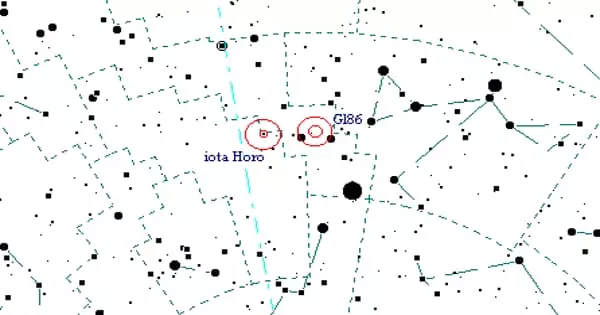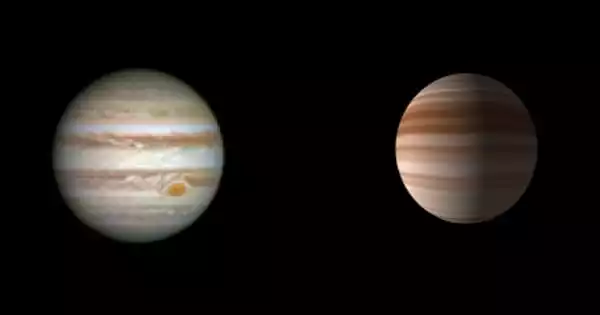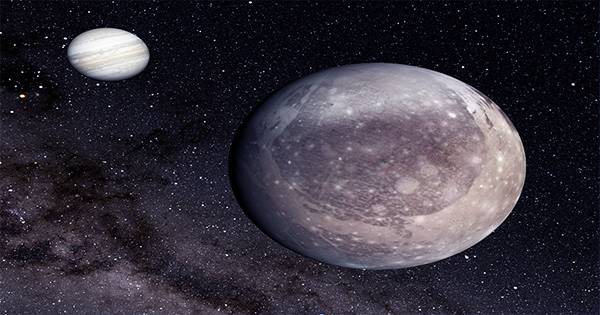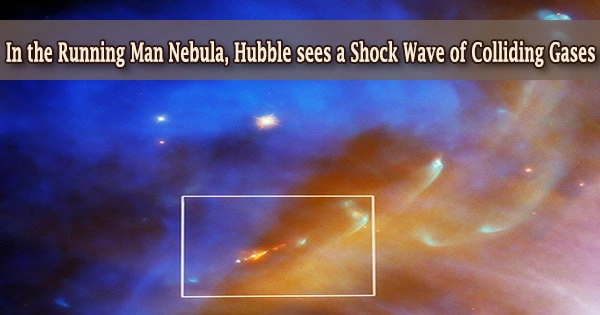Gliese 86 is a K-type main-sequence star in the constellation Eridanus, located 35 light-years away. It’s a double of a yellow-orange star and a white dwarf that’s relatively close together. The existence of a white dwarf orbiting the primary star has been confirmed. The European Southern Observatory announced in 1998 that the star was orbited by an extrasolar planet. It is not in the Eridanus constellation outline, but it is within the constellation’s boundaries.
Gliese 86 is a K-type main-sequence star in the constellation Eridanus, located 35 light-years away. It’s a double of a yellow-orange star and a white dwarf that’s relatively close together. The existence of a white dwarf orbiting the primary star has been confirmed. The European Southern Observatory announced in 1998 that the star was orbited by an extrasolar planet. It is not in the Eridanus constellation outline, but it is within the constellation’s boundaries.
Stellar components
Gliese 86 A is a K-type main-sequence star with the spectral type K1V. In comparison to our Sun, it has 83 percent mass, 79 percent radius, and 50 percent luminosity. The star has a massive Jovian planet in close orbit. This planet has long since survived star B’s expansion into a red giant. And the distance between the two stars was only 15 AU at the time.
Gliese 86 B is a white dwarf located approximately 21 AU from the primary star, making the Gliese 86 system one of the closest binaries known to host an extrasolar planet. It was discovered in 2001 and was initially thought to be a brown dwarf, but high contrast observations in 2005 suggested that the object is most likely a white dwarf, as its spectrum lacks the molecular absorption features that brown dwarfs have. Star A has a planet with 4.02 times the mass of Jupiter in 0.11 AU distance which orbits the star every 15.766 days.
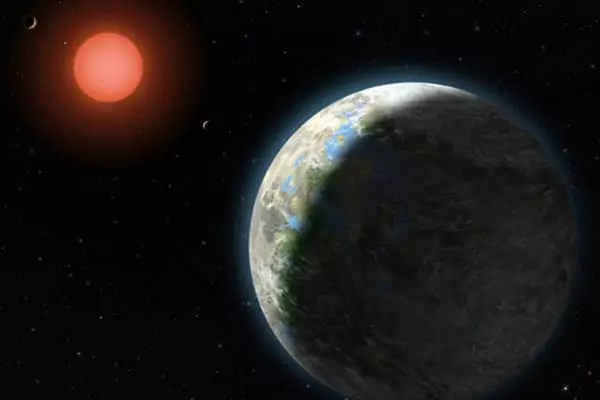
Assuming the white dwarf has a mass roughly half that of our Sun and that the linear trend in radial velocity measurements is caused by Gliese 86 B, a plausible orbit for this star around Gliese 86 A has a semimajor axis of 18.42 AU and an eccentricity of 0.3974. According to more precise measurements, the white dwarf has a mass of 59 percent that of the Sun and a temperature of 8180K. The star is visible to the naked eye, which means you don’t need a telescope or binoculars to see it.
Planetary system
Gliese 86 is a binary star 35.1 light-years away from the Sun. It is a two-star system, with the larger star accounting for 83% of the solar mass. This system contains at least one exoplanet.
Gliese 86’s color and type are orange to red main sequence stars based on the star’s spectral type of K0V. The estimated radius of Gliese 86 has been calculated to be 0.73 times that of the Sun. The radius of the Sun is 695,800km, so the radius of the star is estimated to be 509,557.28km.
According to preliminary astrometric measurements made with the Hipparcos space probe, the planet has an orbital inclination of 164.0° and a mass 15 times that of Jupiter, classifying it as a brown dwarf. However, further analysis indicates that the Hipparcos measurements are not precise enough to reliably determine the astrometric orbits of substellar companions, leaving the orbital inclination and true mass of the candidate planet unknown. It was discovered by the Geneva Observatory’s Swiss 1.2 m Leonhard Euler Telescope.
